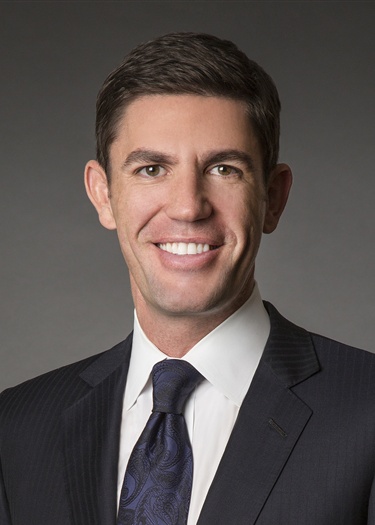On May 22, 2020, the U.S. Small Business Administration (the SBA) published two Interim Final Rules (the Rules) providing further clarity regarding the Paycheck Protection Program (PPP) loan forgiveness requirements, the loan review process and the responsibilities of borrowers and lenders. Despite this guidance, questions remain about the loan forgiveness process. The Treasury and the SBA may issue further rules and/or frequently asked questions addressing these ambiguities at a later date.
Below are some key insights based on our review of the Rules, which supplement those insights included in our article titled “Paycheck Protection Program Loan Forgiveness Application: Key Insights,” dated May 20, 2020, the link to which can be found here.
Loan Forgiveness Requirements
- Timeline: Lenders will generally have 60 days from receipt of a completed loan forgiveness application to issue a decision regarding loan forgiveness to the SBA. If the lender determines that a borrower is eligible for forgiveness, the SBA will, subject to its own review of the loan or loan application, remit the applicable forgiveness amount, plus interest, no later than 90 days after the lender issues its decision to the SBA. These parameters suggest that in certain cases, if the SBA audits a PPP loan either prior to a lender’s decision on forgiveness or after a lender makes its determination, the forgiveness process might take longer than 150 days from a borrower’s submission of a completed loan forgiveness application.
- Furloughed Employees; Bonuses; Hazard Pay: Payments of salary, wages or commission to furloughed employees, as well as hazard pay and bonuses to eligible employees, do constitute “payroll costs” that are eligible for forgiveness, except to the extent such costs would cause an employee’s total compensation to exceed $100,000 on an annualized basis.
- Compensation to Owner-Employees: Loan forgiveness for owner-employees and self-employed individuals’ payroll compensation is capped at the lesser of 8/52 of 2019 compensation (i.e., approximately 15.38 percent of 2019 compensation) or $15,385 per individual in total across all businesses. Owner-employees are capped by the amount of their 2019 employee cash compensation, retirement and healthcare contributions, thus limiting their potential loan forgiveness.
- Compensation to Self-Employed Individuals and General Partners: Self-employed individuals filing a Schedule C are capped by the amount of their owner compensation replacement, calculated based on 2019 net profit. General partners are capped by the amount of their 2019 net earnings from self-employment (reduced by claimed section 179 expense deduction, unreimbursed partnership expenses and depletion from oil and gas properties) multiplied by 0.9235. Self-employed individuals, including Schedule C filers and general partners, will not receive forgiveness for retirement or health insurance contributions.
- Mortgage Interest: Advance payments of mortgage interest are not eligible for loan forgiveness. Principal on mortgage obligations is not eligible for forgiveness under any circumstances.
- Headcount Reduction Safe Harbor — Rejected Offers: The Rules provide additional clarification around the exemption from loan forgiveness reduction for borrowers who have offered to rehire laid-off employees or restore employee hours and the employee rejected such offer. In the event of such rejection, the Rules state that a borrower may nonetheless exclude any reduction in employee headcount that is attributable to such an employee if all of the following apply:
- The borrower made a good-faith, written offer to rehire such employee (or, if applicable, restore the reduced hours of such employee) during the covered period or the alternative payroll covered period.
- The offer was for the same salary or wages1 and same number of hours as earned by such employee in the last pay period prior to the separation or reduction in hours.
- Such employee rejected the offer.
- The borrower has maintained records documenting the offer and its rejection.
- The borrower informed the applicable state unemployment insurance office of such employee’s rejected offer or reemployment within 30 days of the employee’s rejection of the offer.
A footnote to the Rules states that the SBA will post on its website further information regarding how borrowers should report information to state unemployment offices about rejected rehire offers.
Note that the requirement that the offer be for the same salary or wages as earned by such employee in the last pay period prior to the separation or reduction in hours appears to be applicable only in the event that an employee rejects such an offer of rehire by the employer. Thus, while not explicitly stated in the Rules or application, in the event that an employee accepts an offer of rehire at a rate of pay less than what that employee was receiving prior to the separation or reduction in hours, it appears that the employee would still be exempt for purposes of the headcount reduction calculation (i.e., the employee would fall into the safe harbor exemption). However, if the employee’s pay is reduced by more than 25 percent, the reduction would need to be accounted for in the salary/hourly wage reduction calculation.
- Full-Time Equivalents: The Rules confirm that a “full-time equivalent employee” means an employee who works 40 hours or more, on average, each week. The Rules note that the SBA considered using a 30-hour standard but determined that 40 hours or more of work each week better reflects what constitutes full-time employment for the vast majority of American workers.
- Salary/Hourly Wage Reductions: To ensure that borrowers are not doubly penalized for a headcount reduction and a salary/wage reduction, the salary/wage reduction applies only to the portion of the decline in employee salary and wages that is not attributable to the headcount reduction. For example:
- An hourly wage employee had been working 40 hours per week during the borrower-selected reference period (full-time equivalent (FTE) employee of 1.0), and the borrower reduced the employee’s hours to 20 per week during the covered period (FTE employee of 0.5). There was no change to the employee’s hourly wage during the covered period. Because the hourly wage did not change, the reduction in the employee’s total wages is entirely attributable to the FTE employee reduction, and the borrower is not required to conduct a salary/wage reduction calculation for that employee.
Loan Review Procedures
- SBA Review: The Rules clarify that the SBA may review any PPP loan of any size the SBA deems appropriate (not just loans over $2 million). While not explicitly stated in the Rules or the application, it appears that any loan review the SBA undertakes is subject to the following procedures, regardless of whether the loan is over or under $2 million. The SBA may review a borrower’s eligibility, the information, certifications and representations on a borrower’s application form, whether a borrower calculated the loan amount correctly and used the loan proceeds for permitted uses and whether a borrower is entitled to loan forgiveness in the amount claimed on a borrower’s Loan Forgiveness Application. If the SBA determines that a borrower may be ineligible for a PPP loan or ineligible to receive the loan amount or requested forgiveness amount, the SBA will require the lender to obtain additional information from the borrower. The SBA will consider all additional information provided by the borrower in response to the SBA’s inquiry. Failure to respond to the SBA’s inquiry may result in an ineligibility determination.
- Notification of SBA Review: If the SBA chooses to review a loan, the SBA will notify the lender, and the lender must notify the borrower within five business days of receipt. The lender must then send the SBA a copy of the initial loan application, the loan forgiveness application and all supporting documentation as well as any other documentation requested by the SBA within five business days.
- Ineligibility Determination: If the SBA determines a borrower is ineligible to receive a PPP loan, the SBA will direct the lender to deny the loan forgiveness application. If the SBA determines that the borrower is ineligible for the loan amount or loan forgiveness amount claimed by the borrower, the SBA will direct the lender to deny the loan forgiveness application in whole or in part, as appropriate. The SBA may also seek repayment of the outstanding PPP loan balance or pursue other available remedies. The Rule does not specify what those “remedies” may be.
- Appeal of Ineligibility Determination: The SBA intends to issue a separate interim final rule establishing a process for borrowers to appeal in ineligibility determination.
- Timing of SBA Loan Review: The SBA may undertake a review at any time at the SBA’s discretion. As noted on the loan forgiveness application form, the borrower must retain PPP documentation in its files for six years after the date the loan is forgiven or repaid in full and permit authorized representatives of the SBA, including representatives of its Office of Inspector General, to access such files on request.
- Lender Requirements: Lenders are expected to perform a good-faith review, in a reasonable time, of the borrower’s loan forgiveness calculations and supporting documents. In reviewing loan forgiveness applications, lenders are specifically required to
- confirm receipt of the borrower certifications
- confirm receipt of the documentation verifying payroll and nonpayroll costs
- confirm the borrower’s calculations on the loan forgiveness application, including the dollar amount of the (i) cash compensation, noncash compensation and compensation to owners and (ii) nonpayroll costs by reviewing the documentation submitted with the loan forgiveness application
- confirm that at least 75 percent of the loan proceeds were spent on payroll costs based on the information provided in the loan forgiveness application
Lenders are not required to independently verify the information reported by a borrower if the borrower submits documentation supporting its request for loan forgiveness and attests that it accurately verified the payments for eligible costs.
- Lender Ineligibility Determinations: If a lender denies a borrower’s request for forgiveness, within 30 days of notice from the lender, the borrower may request the SBA review the lender’s decision.
- Lender Fees: If the SBA conducts a review of the loan and determines a borrower was not eligible to receive the PPP loan, the lender is not eligible for a processing fee. Lender processing fees are subject to clawback if the SBA determines a borrower was ineligible for a PPP loan within one year after the loan was disbursed. Regardless of whether a borrower is determined to be ineligible, the SBA will still guarantee the loan if the lender has complied with its obligations.
- Accounting for the Loan During Review: The Rules do not specify how borrowers should account for the loans during the forgiveness review period. We recommend consulting with accountants or other similar financial advisers on this matter until the SBA or Treasury issues further guidance.
1 If a borrower reduced an individual employee’s salary/hourly wage prior to that employee’s separation or reduction in hours, the borrower’s obligation for purposes of the headcount reduction safe harbor is to offer that employee employment at that same reduced salary/hourly wage (at a minimum).
Attorney Advertising—Sidley Austin LLP is a global law firm. Our addresses and contact information can be found at www.sidley.com/en/locations/offices.
Sidley provides this information as a service to clients and other friends for educational purposes only. It should not be construed or relied on as legal advice or to create a lawyer-client relationship. Readers should not act upon this information without seeking advice from professional advisers. Sidley and Sidley Austin refer to Sidley Austin LLP and affiliated partnerships as explained at www.sidley.com/disclaimer.
© Sidley Austin LLP





